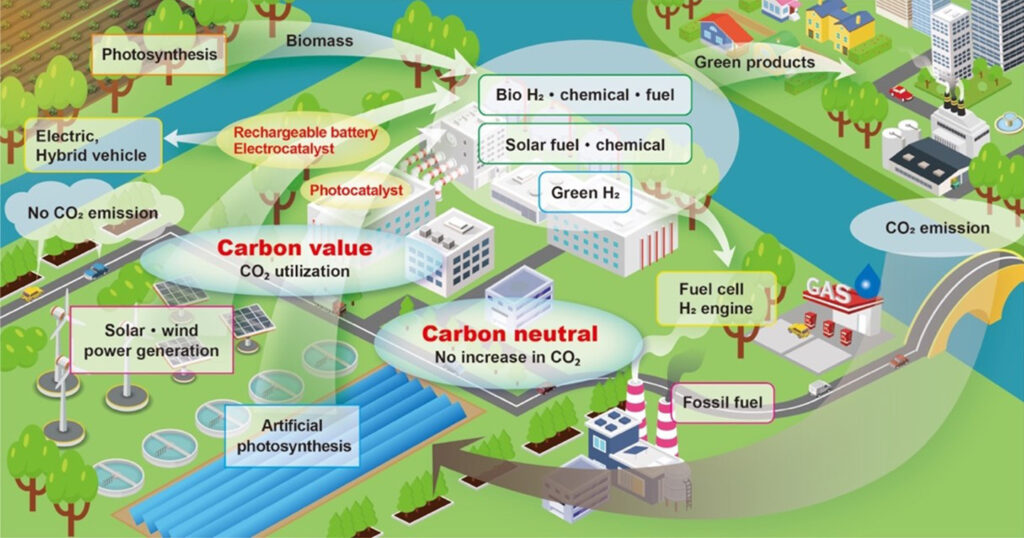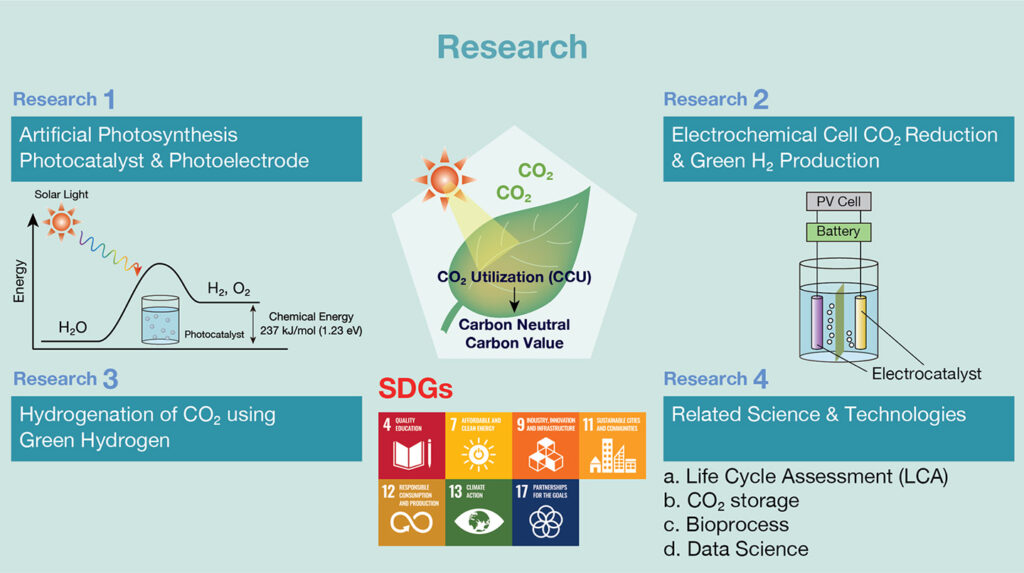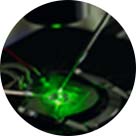Carbon value beyond carbon neutral ~ Green H2 production and CO2 utilization ~
Background of the establishment
Due to the concern about climate change and global warming, the movement toward decarbonized society is being accelerated globally. In October, 2020, Japanese government announced that Japan would achieve “Carbon neutral” (i.e., net emission of greenhouse effect gas is zero in total) by 2050. The Green Growth Strategy, which connects challenges for carbon neutral with an economical and industrial growth, was formulated. In 2021, the summit among university’s presidents on the contributions toward
carbon neutral was held and, based on the discussion done here, “University Coalition for Carbon Neutrality” was established.
Based on the social background mentioned above, our university ranked research fields relating to “carbon neutral” as a strategical key area, and then “Carbon Value Research Center”, where researchers on artificial photosynthesis, electrochemical CO2 reduction, secondary batteries, hydrogen usage gathered, was launched in January, 2022.
Aims of our CV center
The CV center develops original and essential technologies for CARBON VALUE by which CO2 is converted to valuable products as a carbon source through collaborations. The CV center aims to solve the resource, energy, and environmental issues by social implementation of the total system based
on our basic research through the carbon value technology.

Research system of CV center
About 10 researchers from Tokyo University of Science belong to the CV center. The researchers collaborate with each other and also outside researchers. We work on developments of photocatalysts and semiconductor photoelectrodes for artificial photosynthesis, electrocatalysts for electrochemical reduction of CO2 using a renewable electricity, and secondary batteries for storage of the renewable electricity, and minimization of platinum in a fuel cell for usage of green hydrogen. In addition, CO2
storage and adsorption, and measurement technology are also studied. The collaboration will be expanded to accelerate the research in the future.
Main research topics in our center
Manufacturing of highly-valuable products by CO2 reduction
To manufacture highly-valuable products (i.e., gasoline, jet fuel, olefin, and alcohol) from CO2 as a carbon source, we work on the development of CO2 reduction technologies. CO2 reduction by artificial photosynthesis using sun light, H2O and photocatalysts/semiconductor photoelectrodes, and an
electrochemical reaction of CO2 with renewable electricity are studied for the direct CO2 reduction.
Green hydrogen production with renewable energy
Hydrogen is also an essential material from a perspective of carbon neutral. Because hydrogen burns without emitting CO2, it is attracted as a clean energy source. In addition, hydrogen is indispensable as a basic material in a chemical industry. Today, an industrial production of hydrogen is based on a steam reforming method, in which fossil fuels (i.e., petroleum, natural gas, and coal) are reacted with water at high temperature. Therefore, consumption of fossil fuels and emission of CO2 are still remaining. To achieve carbon neutral, technological development of green hydrogen production from water with renewable energy is desired. Our CV center conducts the research on artificial photosynthesis in which green hydrogen is produced by water splitting using a photocatalyst that is the strength of our university. The green hydrogen can be utilized for a carbon value technology such as hydrogenation of CO2 to produce valuable compounds in a chemical industry.
Development of batteries supporting carbon neutral society
When green hydrogen is considered as a clean energy, the application to a fuel cell technology becomes important. Our CV center works on reduction in an amount of platinum and even platinum free in fuel cells, because platinum is rare and expensive. A secondary battery to store renewable electricity is also a key technology for green hydrogen production and CO2 reduction by electrochemical reactions. Developments of not only lithium but also sodium ion battery are important from a view point of stable supply of the alkaline metal resource. The secondary battery contributes to carbon neutral in an electric vehicle.












